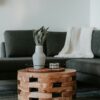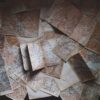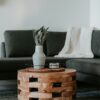Have you ever looked at your living room and felt like something was missing? Adding a coffee table can often be the missing piece that ties everything together, offering both functionality and aesthetic appeal. Building your own coffee table might be easier than you think, and it can be a rewarding project that adds a personal touch to your space.
Why Create a DIY Coffee Table?
Creating a DIY coffee table is an excellent way to inject your personality and creativity into your home. It is not only an opportunity to craft a unique piece that is just right for your style and space, but it can also be much more cost-effective than purchasing one. Plus, you’ll gain the satisfaction of having crafted something with your own hands, and the story behind your personalized coffee table can be a great conversation starter.
Personalization and Unique Design
Designing your coffee table allows you to choose the materials, size, and finish that perfectly complement your existing decor. Whether it’s a rustic, farmhouse look, a sleek modern design, or something in between, the options are endless. You are in control of every aspect, from the type of wood or alternative materials to special features like additional storage or custom paint.
Cost-Effective Solutions
DIY projects can significantly reduce costs compared to buying a pre-made piece from a store. By sourcing materials yourself, possibly even reclaiming or recycling items, you can control the budget and make your creative vision come to life without breaking the bank. Plus, you’ll avoid the late-night panic of realizing you can’t afford the designer piece you fell in love with online.
The Joy of Craftsmanship
There’s something fulfilling about building a piece of furniture from scratch. It engages creativity, problem-solving, and hands-on skills, giving you a tremendous sense of accomplishment when you finally position your creation in its new home. This process, from selection and design to assembly, strengthens your connection to the space you live in.
Effective Planning and Preparation
The success of your DIY project largely depends on proper planning and preparation. Taking time to thoroughly plan the project can avoid unnecessary errors and ensure a smooth experience.
Defining the Purpose
First, consider how you plan to use the coffee table. Will it be mostly decorative, or will it serve a more functional purpose, such as holding books, magazines, and living room essentials? Understanding the primary functions will inform your choice of size, height, and storage features.
Choosing the Right Materials
Materials play a significant role in the durability and aesthetics of your coffee table. Wood is a popular choice due to its versatility and charm but consider other materials as well, such as metal, glass, or even reclaimed industrial parts for a unique twist. Some people have successfully used palettes, old doors, and even vintage window frames as bases for their tables, showcasing creativity and resourcefulness.
Tools and Safety
List all the tools you’ll need ahead of the start. Typical tools for building a coffee table might include a saw, drill, sander, screws, measuring tape, and wood clamps. Safety is paramount—be sure to wear goggles, gloves, and masks as necessary, especially when working with power tools and handling wood or paint.
Creative DIY Coffee Table Ideas
Let’s explore a range of creative DIY coffee table concepts. These ideas will inspire you whether you want something simple and elegant or intricate and eye-catching.
Rustic Pallet Coffee Table
Pallets can be the perfect material for a rustic-style table. Their sturdy nature is ideal for a coffee table base, and you can stain or paint them to fit your decor. Often, adding wheels can give the table mobility, making it versatile for rearranging your living space. This is an eco-friendly project as it typically involves reusing materials.
Industrial Pipe Coffee Table
Combine wood and metal to achieve a chic, industrial look. For instance, using pipes for legs adds character and strength, while a solid wooden top provides balance and warmth. Metal elements often lend a refined, modern aesthetic that can complement an urban loft or a sleek, minimalist home interior.
Glass and Wood Combo
Pairing glass and wood can create an elegant, sophisticated table. A glass top offers a clean, open feel and can accentuate a modern space. Beneath the glass, a sturdy, artfully-crafted wood base adds warmth, allowing you to showcase decorative items through the glass top while keeping the surface clean and uncluttered.
Mid-Century Modern Style
Embracing mid-century aesthetics means focusing on clean lines, gentle curves, and a blend of natural and engineered materials. A mid-century coffee table can be achieved with materials like walnut or teak, along with sleek hairpin legs. Their simple design makes them easy to build while reflecting timeless style.
Vintage Trunk Coffee Table
Transforming an old trunk into a coffee table is not only stylish but functional, thanks to the added storage. These pieces embody a sense of history and character, acting as both a practical surface and a centerpiece with a story. A coat of paint or a new set of hinges can refresh an old trunk for its new role.
Upcycled Window Frame Table
Repurpose an old window frame into an unexpected coffee table design. Use the frame as a tabletop with added wood or glass beneath to create a functional surface. The panes can be used creatively to display photos or artwork, making this table not only functional but a unique art piece as well.
Step-by-Step Guide to Making a Basic Coffee Table
To help you get started, here’s a step-by-step guide to building a basic wooden coffee table. This project is great for beginners and can be customized to your liking.
Materials You’ll Need
- Wooden planks (for the tabletop)
- Wooden slats (for the legs)
- Wood screws
- Sandpaper
- Wood stain or paint
- Sealer
- Optional: casters, if you prefer a movable table
Tools Required
- Drill
- Saw (circular or hand saw)
- Tape measure
- Clamps
- Screwdriver
- Safety goggles and mask
Assembly Instructions
Measure and Cut the Wood: Decide upon the dimensions of your table. Typically, coffee tables are between 16 to 18 inches tall, but this depends on your seating height. Cut the tabletop and legs to your desired size using a saw.
Sand the Surfaces: For a smooth finish, sand the cut edges and surfaces of all your wooden pieces. This helps the stain or paint adhere better and ensures a nice touch to the finished table.
Assemble the Frame: Arrange the legs and base frame, using clamps to hold them in place. Drill pilot holes before inserting screws to avoid splitting the wood.
Attach the Top: Secure the tabletop by drilling through the frame to attach the top piece. Ensure all screws are properly sunk and leveled.
Finish the Surface: Choose a stain or paint for the desired look and apply. Once dry, finish with a sealer to protect the wood from spills and wear.
Optional Features: Attach casters for mobility or add a lower shelf for additional storage if desired.
Final Touches: Inspect for any rough edges or touchups needed. Once satisfied, place your table in your desired spot and enjoy your handiwork.
Maintaining Your DIY Coffee Table
Once your table is in use, maintaining its beauty and utility involves some regular care.
Regular Cleaning
Dust the table regularly. Use a soft cloth to remove dust particles and prevent buildup. For more thorough cleaning, a mixture of mild soap and water works well on most finishes but avoid saturating the wood. Dry thoroughly to prevent moisture damage.
Preventing Damage
To protect against heat marks, scratches, and stains, use coasters and mats. When moving the table, lift rather than drag to avoid stress on the joints.
Periodic Upkeep
Depending on the finish, you may need to reapply polish or sealant occasionally to maintain its appearance and durability. Doing so keeps the surface looking fresh and can extend the lifespan of your table.
Conclusion
A DIY coffee table is an excellent addition to any home, bringing personal satisfaction and functional beauty. From rustic pallets to sleek glass and wood combos, there are endless possibilities to explore based on your taste and home decor. With a bit of planning, creativity, and craftsmanship, you can craft a piece that’s not only a practical addition to your home but a true reflection of your style and personality. Whether you’re a seasoned DIY fanatic or a newcomer, this project offers the perfect opportunity to hone your skills and make something truly special. So gather your materials, map out your design, and enjoy the process of bringing your custom coffee table to life.









